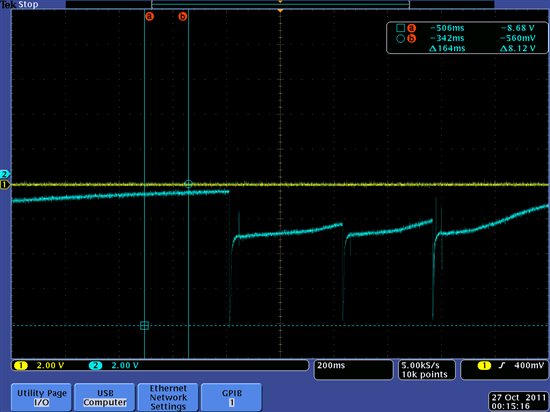We have been having problems with the PGA 2500 creating ticks and pops when changing the gain from minimum to maximum. This is more apparent when there is no input plugged into the mic input, and when listening at louder monitoring levels. It seems that a majority of this is caused by leakage mismatches between the input protection diodes (MBRA120), which results in a positive or negative offset at the input junctions, depending on the amount of the leakage by each diode. Obviously, some channels pop worse than others, through the random variations of these diodes.
Removing the diodes eliminates or greatly minimizes this popping, as does replacing the leakier Schottky types with a low leakage silicon diode.
We realize that this can place the inputs somewhat past the maximum input design ratings (especially during application of Phantom Power), so we’re looking for input from TI as to whether this is a workable solution, or if there are any alternative suggestions.
The Zero crossing function has little if any effect on reducing this behavior. In fact with it enabled, we’ve seen intermittent behavior where advancing the gain rapidly from minimum to maximum gain with no input signal will cause a delay in the actual gain change of up to 4 or more seconds. Disabling the Zero Crossing detector restores normal gain tracking in these situations.




